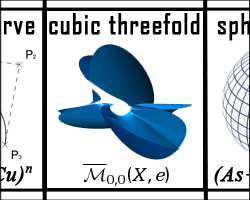One of the most important tools in chemistry is the periodic table of the elements.

Now, mathematicians are finding the mathematical equivalent of "atoms" and "molecules, " and thanks to a recent project funded by the Leverhulme Trust, a periodic table is on the way. This table will serve as a directory of all the possible shapes in the universe across three, four, and five dimensions, and will link shapes together the same way the periodic table links groups of chemical elements. The project will provide a resource for scientists working in fields such as robotics, number theory, theoretical physics, and even augmented/virtual reality. Read the full Science News article.



